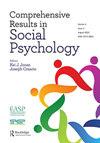Testing Predicted Clusters A New Approach to This Powerful Research Tool, Illustrated Through a Questionnaire on Obsessive–Compulsive Disorder
引用次数: 0
Abstract
Testing predicted clusters of questionnaire items can be a source of abundant feedback on the theory that is behind the prediction. Such testing is often performed by means of confirmatory factor analysis. However, that method offers insufficient feedback at the level of items, while its goodness-of-fit indices are notoriously unreliable. Richer and more precise feedback would be generated by a data-driven optimization of the predicted clusters (factors), allowing a comparison between predicted and empirical clusters (factors) at the level of items. Contrasting these two provides a basis for classifying the items into hits, false positives, and false negatives. This division greatly facilitates reinterpretation of the clusters (factors) and evaluation of the items. In addition, it offers a basis for two new measures of goodness of fit with respect to the correct assignment of items to clusters (indicators to factors). Application of this new approach to a questionnaire on Obsessive–Compulsive Disorder wil...测试预测聚类是一种强大的研究工具的新方法,通过对强迫症的问卷调查来说明
测试预测的问卷项目簇可以成为对预测背后理论的大量反馈的来源。这种测试通常是通过验证性因素分析来进行的。然而,这种方法在项目层面上提供的反馈不足,而其拟合优度指数也出了名地不可靠。数据驱动的预测聚类(因素)优化将产生更丰富、更精确的反馈,允许在项目水平上对预测和经验聚类(因素)进行比较。对比这两者提供了将条目分类为命中、假阳性和假阴性的基础。这种划分极大地促进了对集群(因素)的重新解释和对项目的评估。此外,它还提供了关于正确分配项目到集群(指标到因素)的两种新的拟合优度度量的基础。将这种新方法应用于强迫症的问卷调查将……
本文章由计算机程序翻译,如有差异,请以英文原文为准。
求助全文
约1分钟内获得全文
求助全文
来源期刊

Comprehensive Results in Social Psychology
Psychology-Social Psychology
CiteScore
3.40
自引率
0.00%
发文量
7
 求助内容:
求助内容: 应助结果提醒方式:
应助结果提醒方式:


